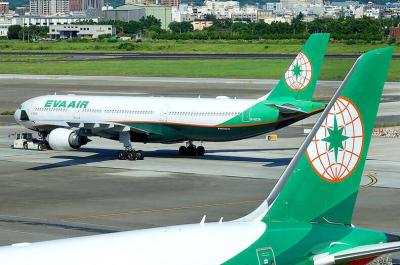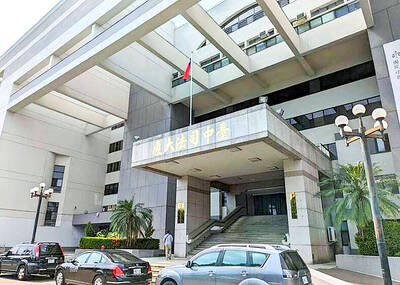US President Barack Obama is playing tough with Beijing and refusing to back down in the escalating conflict over shipping rights in the South China Sea. Obama has upped the ante by sending a heavily armed destroyer into the area.
In the meantime, the Pentagon has made it abundantly clear that despite aggressive harassment from five small Chinese vessels, the USNS Impeccable — a surveillance ship — will continue on its controversial mission to map the ocean floor near the Chinese submarine base on Hainan Island.
It is unclear what action the Hawaii-based destroyer USS Chung-Hoon will take if the Chinese vessels return to harass the Impeccable. But the Pentagon could lose face if the Chung-Hoon, armed with torpedoes and missiles, does not respond to harassment.
Moving between the Impeccable and Chinese boats could however risk a dangerous escalation.
A Pentagon official speaking anonymously because of the sensitivity of the issue said: “Chung-Hoon is there, in the area, keeping an eye on Impeccable, which continues lawful military operations.”
Naval analysts have said over the last few days that the Impeccable has been monitoring Chinese submarine traffic and mapping the seabed. In case of a conflict with China, the surveillance date would help the US find Chinese submarines and destroy them.
The Impeccable’s activities have incensed Beijing, and last Sunday the five small boats turned up to block the ship’s path and came within 7.6m of it, which is considered dangerously close.
The crew of the boats threw pieces of wood in front of the Impeccable and Chinese military planes buzzed the US ship.
Washington protested the incident on Monday directly to Beijing and reinforced its objections during the week in White House and US State Department talks with Chinese Foreign Minister Yang Jiechi (楊潔箎).
China rejected the protests, saying the US ship was conducting illegal surveillance activities in one of China’s exclusive economic zones.
Peter Brookes, a senior analyst with the conservative Heritage Foundation, said: “Beijing claims Impeccable was violating its sovereignty by conducting operations within China’s 200-mile [322km] Exclusive Economic Zone [EEZ] as identified under the United Nations’ 1982 Law of the Sea Treaty.”
“Thing is, the treaty doesn’t give Beijing any right to veto activities outside their 12-mile territorial waters — and Impeccable was more than 60 miles beyond China’s national waters. The treaty gives them a right to object to certain economic activities in their EEZ, such as drilling for oil or gas, or fishing — but that right clearly doesn’t extend to non-economic activities, including military operations, in international waters,” he said.
Brookes said the Obama administration needed to exercise its rights including the right to monitor China’s “secretive and unprecedented military buildup — a significant worry to us and others.”
He said: “Of course, given the White House’s softly-softly approach to international affairs, it’s no wonder the Chinese felt it was time to test our mettle.”
The harassment occurred in the South China Sea about 120km south of Hainan Island.
Walter Lohman, a senior research fellow for Southeast Asia in the Asian Studies Center at the Heritage Foundation, said: “We put our chits on increasing Chinese responsibility in the international community and on climate change; they put theirs on sovereignty over Taiwan and the South China Sea.
“To some well-meaning Americans, international law is a way to peacefully settle conflict. To Chinese diplomats, it’s a tool to assert their pre-existing aggressive claims,” he said.
“What gives?” he said. “Only weeks ago, the Obama administration was heralding resumption of defense talks as the start of a new era in US-China military relations. The problem is that military contacts are an American priority, not a Chinese one.”
“The Chinese are not going to be lured away from their sovereign claims in the South China Sea or anywhere else by indirection or abstraction. Their claims must be challenged, not only by quietly carrying out naval operations in international waters, but explicitly. Observers in the region are well aware of Chinese claims on Taiwan, the South China Sea and Senkakus,” he said.
Officers of the People’s Liberation Army (PLA) are calling the move of the Chung-Hoon into the South China Sea “an inappropriate reaction.”
One Chinese naval source said that the PLA had taken note of the latest US move and was “watching developments closely.”

The first global hotel Keys Selection by the Michelin Guide includes four hotels in Taiwan, Michelin announced yesterday. All four received the “Michelin One Key,” indicating guests are to experience a “very special stay” at any of the locations as the establishments are “a true gem with personality. Service always goes the extra mile, and the hotel provides much more than others in its price range.” Of the four hotels, three are located in Taipei and one in Taichung. In Taipei, the One Key accolades were awarded to the Capella Taipei, Kimpton Da An Taipei and Mandarin Oriental Taipei. Capella Taipei was described by

EVA Airways today confirmed the death of a flight attendant on Saturday upon their return to Taiwan and said an internal investigation has been launched, as criticism mounted over a social media post accusing the airline of failing to offer sufficient employee protections. According to the post, the flight attendant complained of feeling sick on board a flight, but was unable to take sick leave or access medical care. The crew member allegedly did not receive assistance from the chief purser, who failed to heed their requests for medical attention or call an ambulance once the flight landed, the post said. As sick

The Taichung District Court yesterday confirmed its final ruling that the marriage between teenage heir Lai (賴) and a man surnamed Hsia (夏) was legally invalid, preventing Hsia from inheriting Lai’s NT$500 million (US$16.37 million) estate. The court confirmed that Hsia chose not to appeal the civil judgement after the court handed down its ruling in June, making the decision final. In the June ruling, the court said that Lai, 18, and Hsia, 26, showed “no mutual admiration before the marriage” and that their interactions were “distant and unfamiliar.” The judge concluded that the couple lacked the “true intention of

A drunk woman was sexually assaulted inside a crowded concourse of Taipei Railway Station on Thursday last week before a foreign tourist notified police, leading to calls for better education on bystander intervention and review of security infrastructure. The man, surnamed Chiu (邱), was taken into custody on charges of sexual assault, taking advantage of the woman’s condition and public indecency. Police discovered that Chiu was a fugitive with prior convictions for vehicle theft. He has been taken into custody and is to complete his unserved six-month sentence, police said. On Thursday last week, Chiu was seen wearing a white